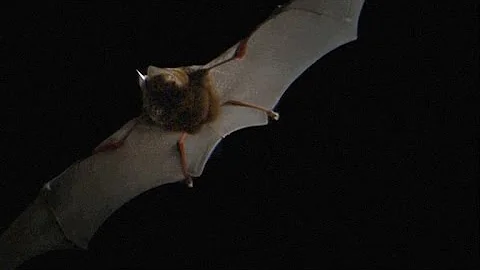Deaf moth's furry, sound-absorbing wings may hold the key to future acoustic materials.

About 65 million years ago, when the dinosaurs became extinct, bats evolved the ability to echolocate. They make clicking sounds with their mouths or noses and listen in the dark for the echoes these clicks make as they bounce off surfaces and animals. Bats are the primary predators of moths, so many moths have evolved ears sensitive to echolocation—but not all moths.
Some species, such as woolly silk moths, do not have ears. Instead, they use another already available defense mechanism: sound-absorbing wings.

In 2018, a team of researchers from the University of Bristol found that hairy moths have a coating on their wings that absorbs up to 85% of the sound that hits them, making it difficult for bats to find them because they The cry was not well reflected.
Now, new research from the same team shows that the wings of these moths could inspire a new type of ultra-thin acoustic material that could be used as wallpaper and is 10 times thinner than those currently on the market.
This is not the first time humans have turned to nature for help. The wallpaper's design, while groundbreaking, falls within an existing field known as biomimicry, which is the behavior of imitating natural designs and processes in man-made systems. For example, bird safety glass inspired by the ultraviolet reflection rays on spider webs; cooling vents inspired by termite mounds; and, of course, aircraft wings modeled after birds.
Moths evolved 250 million years ago, predating bats by about 200 million years. Marc Holdered and Thomas Neil, professors of sensory biology at the University of Bristol, co-authored the new study. He said that before bats existed, deaf moths had scales on their wings - perhaps to protect themselves from slimy spider webs. So all they have to do is adjust their functionality.

Scientists knew that earless moths must rely on their acoustic wings to survive, but it took them six years to figure out how. The secret, Holdrid said, is a layer of dust on their wings.
Under a microscope, this dust looks like a collection of tiny overlapping scales, similar to a complex pattern of roof tiles. When sound hits the scale at the correct frequency, the scale begins to vibrate. By vibrating, they convert the sound energy in the air into mechanical energy, which is eventually attenuated and converted into heat. This process is called resonant absorption.
This is where sound frequencies come into play. Every sound frequency has a wavelength. For traditional acoustic materials, they need to be as thick as one-tenth the wavelength, Holdreed said. So for sounds with very long wavelengths, like the constant drone of an airplane, or the loud background noise of a restaurant, we need sonic materials that are thicker (several inches) and porous enough to disperse the sound waves when they hit them.

In contrast, resonant absorbers can be as thick as one hundredth of the wavelength they are trying to block. "This opens up a lot of opportunities for us humans to try to understand the mechanism by which evolution gave these moths wings and turn it into something useful within our hearing range," Holdrid said.
This new material works The principle is a bit like an ultra-thin wallpaper fabric applied to surfaces ranging from office walls to airplane seats.
"We're talking about things in millimeters, not centimeters," Holdrid said, noting that resonant materials will be more effective than the porous materials used in traditional acoustics. When a material becomes thinner, it also becomes lighter, which could help reduce the overall weight of an airplane, for example, and save fuel, he said.

Holdrid's team is working on several prototypes made from the metamaterial . These engineered materials are made of large numbers of cells; in this case, the scales mimic the way a moth's wings work.He couldn't reveal the exact materials that the larger metamaterial will be made of, but he said the first prototype will be 4 by 4 inches and feature existing materials like silicon and other things that are easy to manipulate.
The challenge now is how to translate this concept into the human hearing range. In this particular study, the scientists used ultrasonic signals that are beyond the range that humans can hear, but Holdrid said the size of each scale on the metamaterial can help determine the types of sounds it can absorb. It may take a few years before the new
material comes to market, but if it does come on the market, it will be the high point of 250 million years of action.





















